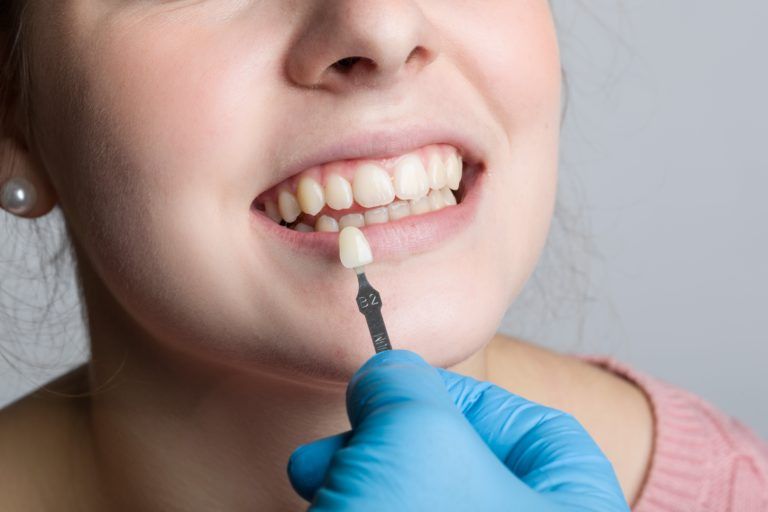Is Bonding as Good as Veneers?

When considering cosmetic dentistry, there are different options available to improve your smile. Two common methods, dental bonding and porcelain veneers, are used to improve the contour and color of your teeth. But, how do you know which method to pick? Veneers have an established reputation, but is dental bonding a suitable alternative? It depends on your individual dental needs. Through understanding how these methods function to achieve similar results, you can decide on the method that will work best for you.
Veneers:
Porcelain veneers are thinly layered over the front of a tooth or teeth to achieve the desired color and shape. They are made from stain-resistant porcelain and manufactured individually using your original teeth as a model. Ideally veneers work best for individuals with more severe stains, wear, minor rotations, and minimal damage to their teeth. They are then attached to your teeth using an adhesive, however this process usually requires some preparation.
To prepare your teeth for veneers, often times they are cut back or filed down to ensure the veneers do not take on a bulky appearance after application. However, there are variations of veneers that do not require this type of preparation, called no-prep veneers. Once the veneers have been adhered to the teeth, they will usually last for approximately five to twenty years, depending on the amount of wear and the type of veneer.
The main downfall to veneers is their cost. Although they look like natural teeth and are long-lasting, they do have a higher cost. Generally speaking, the cost averages from approximately $800 to $2,000 per tooth.
Dental Bonding:
Dental bonding uses composite resin to improve the contour and color of your teeth. With this method, the surface of the tooth is roughed up and then the resin is applied and shaped accordingly by your dentist. This resin works to improve color by covering stained surfaces, and improve shape by filling in imperfections, cracks, or chips. However, bonding cannot be used on vertical cracks.
Dental bonding is a quick fix and can be completed in one dental visit, however it does not last as long as veneers. On average, bonding will last from about five to ten years since the resin is a weaker material as compared to porcelain. The material used in dental bonding can also be stained by things such as coffee, tea, wine, and smoking.
The cost of dental bonding is much more affordable, however, in comparison to the cost of veneers. On average the cost per tooth is about $200-$700.
Overall both methods have their advantages and disadvantages. If you are looking to make over your entire smile, have severely stained teeth, and are looking for a long-term solution, then veneers may be the better option for you. If, on the other hand, you do not wish to file your teeth, only need to improve a couple of teeth, or are looking for a more affordable option, dental bonding may be right for you. If you are still not sure, schedule a consultation with Dr. Haysam Shaaban today to discuss your options!

Recent Comments